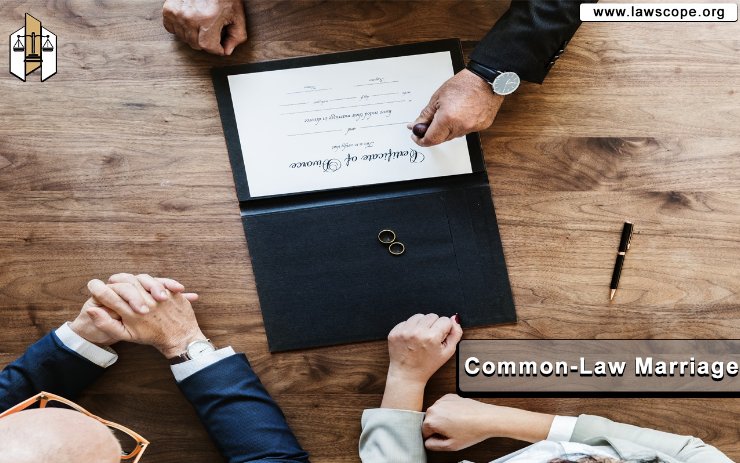
Rights and Responsibilities
Legal marriage provides certain rights and responsibilities to the couple, including:
1. The right to inherit property from each other
2. The right to make medical decisions for each other Marriage is an important milestone in many people’s lives. It is a legal and social contract between two people who promise to support and care for each other for the rest of their lives.
However, not all marriages are created equal. There are two types of marriages: legal marriage and common-law marriage. Understanding the key differences between these two types of marriage is essential to make an informed decision about which one to choose.
What is Legal Marriage?
Legal marriage is a formal and legally recognized union between two people. It is the most common type of marriage, and it is governed by the laws of the state or country where the marriage takes place.
Legal marriage requires a marriage license, which is issued by the state or local government. Once the license is obtained, the couple can have a ceremony to formalize their union. The ceremony can be religious or secular, but it must comply with the legal requirements of the state or country.
What is Common-Law Marriage?
Common-law marriage, also known as informal marriage, is a type of marriage that is recognized by some states and countries. It is a legal and social union between two people who have lived together for a certain time and have held themselves out to the public as a married couple.
Common-law marriage does not require a formal ceremony or a marriage license. Instead, it is based on the couple’s mutual agreement to be married and their conduct as a married couple.
Key Differences between Legal Marriage and Common-Law Marriage
Legal marriage requires a license and ceremony, while common-law marriage is established through cohabitation and mutual agreement. Legal marriage provides more legal protections and benefits, while common-law marriage is recognized only in certain states and countries.
1. Requirements
Legal marriage requires a marriage license, a ceremony, and compliance with the legal requirements of the state or country. Common-law marriage does not require a license or a ceremony, but it does require the couple to have lived together for a certain time and to have held themselves out to the public as a married couple.
2. Recognition
Legal marriage is recognized in all states and countries, regardless of where the marriage took place. Common-law marriage is recognized only in some states and countries, and the requirements for recognition vary from state to state and from country to country.
(i) The right to file joint tax returns
(ii) The responsibility to support each other financially
(iii) The responsibility to share debts and assets acquired during the marriage
Common-law marriage provides some of the same rights and responsibilities as a legal marriage, but the extent of those rights and responsibilities varies depending on the state or country where the couple resides.
3. Divorce and Separation
Legal marriage requires a legal process to dissolve the marriage, such as divorce or annulment. Common-law marriage requires a legal process to dissolve the marriage as well, even though the marriage was not created through a legal process. In some states, the process is the same as for legal marriage, while in others, it may be more complicated.
Advantages and Disadvantages of Common-Law Marriage
Advantages of common-law marriage include legal recognition, property rights, tax benefits, inheritance rights, and healthcare benefits. Disadvantages include lack of legal protection, difficulty proving the marriage, and potential challenges in obtaining legal recognition and benefits.
Advantages
Common-law marriage offers legal benefits like inheritance, tax, and medical decision-making rights, as well as a flexible and informal approach to marriage.
1. No Ceremony or License Required
One of the main advantages of common-law marriage is that it does not require a ceremony or a license. This can be appealing to couples who do not want to go through the hassle or expense of a formal wedding or who want to keep their relationship private.
2. Lower Costs
Another advantage of common-law marriage is that it can be less expensive than legal marriage. Couples do not have to pay for a marriage license or a ceremony, which can save them hundreds or even thousands of dollars.
3. Flexibility
Common-law marriage can offer more flexibility than legal marriage. Couples can define their terms and obligations without being bound by the legal requirements of the state
Disadvantages
In some places, a common-law marriage may not offer the same legal protections and benefits as a legal marriage. Additionally, it can be more difficult to prove the existence of a common-law marriage, and property rights may not be as clear-cut in the event of a separation.
1. Limited Recognition
The biggest disadvantage of common-law marriage is that it is not recognized in all states and countries. This means that couples who are in a common-law marriage may not have the same legal rights and protections as couples in legal marriages.
2. Uncertainty
Another disadvantage of common-law marriage is that the requirements for recognition vary from state to state and from country to country. This can create uncertainty for couples who are unsure about whether their relationship qualifies as a common-law marriage.
3. Lack of Legal Protection
Couples in a common-law marriage may not have the same legal protections as couples in a legal marriage. For example, they may not have the right to make medical decisions for each other, or the right to inherit property from each other if one of them dies.
How to Establish a Common-Law Marriage?
To establish a common-law marriage, the couple must meet the following requirements:
1. Cohabitation
The couple must have lived together for a certain period, which varies from state to state and from country to country.
2. Mutual Agreement
The couple must have mutually agreed to be married and held themselves out to the public as a married couple.
3. Conduct
The couple must have conducted themselves as a married couple, which may include using the same last name, introducing each other as spouses, and filing joint tax returns.
It is important to note that simply living together or having a long-term relationship does not automatically create a common-law marriage.
Conclusion
Legal marriage and common-law marriage are two types of marriage with distinct differences. Legal marriage requires a formal ceremony, a marriage license, and compliance with the legal requirements of the state or country. Common-law marriage, on the other hand, is based on the couple’s mutual agreement to be married and their conduct as a married couple.
While common-law marriage offers some advantages, such as lower costs and more flexibility, it also has some disadvantages, such as limited recognition and uncertainty about the requirements for recognition.
Ultimately, the choice between legal marriage and common-law marriage depends on the couple’s personal preferences, their legal rights and protections, and the laws of the state or country where they reside.
You May Like Also:



3 thoughts on “Legal Marriage vs Common-Law Marriage: Understanding The Key Differences”